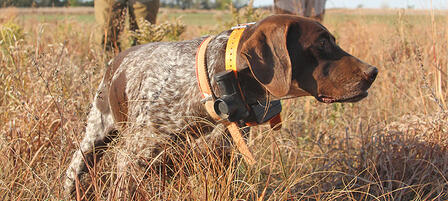Kansas’ Upland Bird Hunting Prospects Are Good

PRATT – Surveys are complete, data is in, and the 2019 Kansas Upland Bird Hunting Forecast is ready for viewing. The highly-anticipated annual forecast predicts what pheasant, quail and prairie chicken hunters can likely expect going into the new seasons. Based on this year’s crow counts for pheasants, whistle counts for quail, and lek counts for prairie chickens, overall upland bird hunting prospects are looking “good” for fall.
PHEASANT
Pheasant hunting in Kansas should be fair to locally good this year. Heavy winter precipitation made hunting conditions tough in 2018 but provided ample soil moisture entering the 2019 nesting season. A few late winter storms raised some concern in western Kansas, but the spring crowing index remained the same as 2018, indicating there was no measurable impact on over-winter survival. Heavy rainfall continued throughout the spring and resulted in high levels of nest abandonment. However, nests that did hatch appear to have responded to the plentiful cover with relatively high chick survival, indicated by larger brood sizes. In wet years like 2019, the nesting season becomes longer, allowing for multiple re-nesting attempts. Overall, the large brood sizes, combined with production from re-nesting birds appear to have compensated for the losses from extreme spring weather.
The counts through much of central Kansas decreased while numbers farther west increased or remained similar to last year. Kansas continues to maintain one of the best pheasant populations in the country and the fall harvest should again be among the leading states.
The highest densities this year will likely be in the High Plains regions of western Kansas.
QUAIL
Quail hunting in Kansas should be good in 2019. Kansas is still supporting above-average quail populations after a recent population boom. While total harvest has remained below average due to decreasing hunter participation, the average daily bag has remained at some of the highest levels observed in 20 years.
The bobwhite whistle survey in spring 2019 saw a modest decline following a generally poor production season in 2018. However, this is relative to a 20-year high in 2017, so despite the decline, spring densities were still well above average. The 2019 roadside survey index was just slightly higher than 2018, suggesting production compensated for any reductions previously recorded. However, regional quail densities have changed. Heavy precipitation and associated flooding across the eastern regions reduced productivity. While rainfall was also high across the western regions, a mid-summer dry period and improved habitat increased production. While densities in the eastern-most regions have decreased, all remaining regional indices remain at or above their respective long-term averages.
Kansas maintains one of the premier quail populations in the country and harvest will again be among the highest this year.
The best opportunities will be found in the central regions, extending east into the northern Flint Hills and west into the Southern High Plains.
PRAIRIE CHICKEN
Kansas is home to both greater and lesser prairie chickens. Both species require a landscape of predominately native grass and benefit from a few interspersed grain fields. Lesser prairie chickens are found in west-central and southwestern Kansas in native prairie and nearby stands of native grass established through the CRP.
Greater prairie chickens are found primarily in the tallgrass and mixed-grass prairies that occur in the eastern third and northern half of the state. Greater prairie chickens have expanded in numbers and range in the northwestern portion of the state while declining in the eastern regions. Hunting opportunities will be best in the Northern High Plains and Smoky Hills regions this fall, where populations have either been increasing or stable, and public access is more abundant.
The Southwest Prairie Chicken Unit, where lesser prairie chickens are found, will remain closed to hunting this year. Greater prairie chickens may be harvested during the early prairie chicken season and the regular season with a two-bird daily bag limit in the Greater Prairie Chicken Unit. All prairie chicken hunters are required to purchase a $2.50 Prairie Chicken Permit.
To view the complete forecast, including regional breakdowns for all three species, visit ksoutdoors.com/Hunting/Upland-Birds or pick up a printed copy at any Kansas Department of Wildlife, Parks and Tourism office (available soon). The full forecast will also be featured in the 2019 November/December issue of Kansas Wildlife and Parks Magazine, available for $2.75 by calling (620) 672-5911.
-30-







